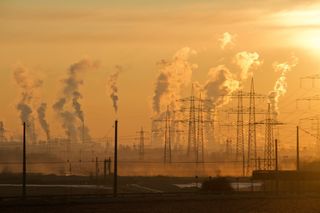Study Highlights That Adaptation and Mitigation to Heat Would Benefit Future Generations
Learn about the strategies outlined in a recent scientific study. Also, discover if it works in all cities and recommendations for future research.

Extreme heat waves are now more frequent and severe in cities due to climate change. For example, Phoenix in the United States faced a brutal heat wave in July 2023 that lasted 31 consecutive days with temperatures that did not drop below 43 ° C, triggering a state of emergency. In June 2021, the city of Lytton in Canada reached a maximum temperature of 49 °C, resulting in a fire that destroyed most of the town.
To make crucial urban planning decisions in the United States, city managers, and stakeholders will need to better understand the outcomes of potential solutions that address the immediate impacts of heat exposure in cities and the long-term climate impacts.
In this direction, a study published in Nature Cities, and cited by Phys.org, examined for the first time the potential benefits of combining heat adaptation strategies, such as implementing cool roofs and planting trees on street sidewalks. All this is accompanied by mitigation strategies, such as reducing greenhouse gas (GHG) emissions, to reduce exposure to heat throughout the main cities of the United States. It also identifies regions where these strategies could best benefit future generations.
Adaptation and mitigation strategies generate good results according to geographic location
"Research to date has focused on reducing harmful impacts in cities harmed by increasing GHG emissions or direct effects of the built environment," said Matei Georgescu, lead author of the study. He adds that "our work highlights the value of adaptation to reduce human heat exposure at the city level, but then goes further to emphasize the benefits of deploying adaptation strategies in conjunction with mitigation strategies."

The research team used numerical models to simulate future climate conditions that explain urban expansion, GHG emissions, and population movement through the end of the century. They then examined the extent to which adaptation and mitigation strategies can reduce projected heat exposure by the end of this century in large urban areas of the United States.
The study shows that by simultaneously implementing adaptation and mitigation measures the benefits are greatest in the Northeast and Midwest regions that encompass cities such as New York , Boston and Chicago. However, the cities of Los Angeles and Miami face more limited reductions in heat exposure.
Future considerations to strengthen strategies in the face of more intense and frequent heat waves
The research team suggests further modeling work to examine what adaptation strategies may look like to reduce adverse heat-related impacts by targeting specific neighborhoods within cities to facilitate collaboration between cities and academic institutions.

"By understanding which strategies work best at the local level, we can create effective plans to address place-based climate challenges while continuing to work on mitigation strategies that address long-term consequences. Working together is the key to creating better strategies for a sustainable future," said Georgescu.
News Reference: Georgescu, M., Broadbent, AM & Krayenhoff, ES Quantifying the decrease in heat exposure through adaptation and mitigation in twenty-first-century US cities. Nat Cities (2023).








